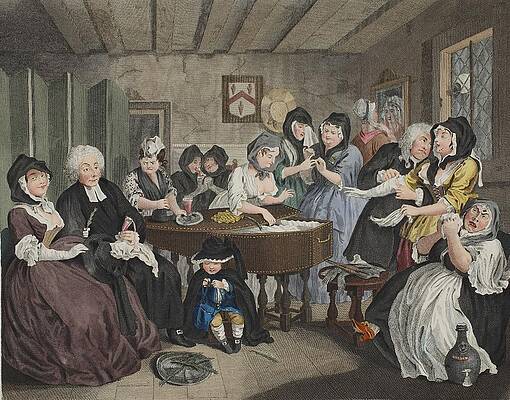ursustel.net – In the foggy, gas-lit streets of Victorian England, a shadowy world of commerce and desperation thrived under the cover of darkness. This was the realm of prostitution, a practice as old as civilization itself, but one that took on a particular character during the 19th century. The Victorian era, a time of great industrial and social change, was also a period marked by stark contrasts between wealth and poverty, morality and vice. Nowhere was this more evident than in the lives of the women who walked the streets of shame, and in the societal struggle to address the issue of prostitution.
Prostitution in Victorian England was a complex and multifaceted issue. It was driven by a combination of factors, including the gender imbalance in urban areas due to migration, the double standard of morality that allowed men to seek sexual gratification outside of marriage, and the dire economic circumstances that forced many women into the trade. The streets of London, in particular, were home to thousands of prostitutes, ranging from the high-class courtesans who catered to the elite to the destitute women who sold their bodies out of sheer necessity.
The visibility of prostitution in Victorian society led to a growing concern among social reformers, who saw it as a moral blight on the nation. The Contagious Diseases Acts, passed in the 1860s, were the first legislative attempts to control prostitution. These acts allowed for the forced examination and detention of women suspected of being prostitutes, while their male clients remained unscathed. This blatant discrimination and the violation of women’s rights led to a fierce backlash from early feminists and social purity campaigners.
One of the most vocal opponents of the Contagious Diseases Acts was Josephine Butler, a tireless advocate for the rights of women. Butler and her supporters formed the Ladies National Association for the Repeal of the Contagious Diseases Acts, which fought not only for the repeal of these laws but also for the broader reform of prostitution. They argued that the acts were a form of state-sanctioned violence against women and that the real solution to prostitution lay in addressing the root causes of poverty and inequality.
The battle for reform was not just a legal and political struggle but also a cultural one. The Victorian era was a time of intense moral scrutiny, and the issue of prostitution was often framed in terms of sin and redemption. Organizations such as the Magdalen Hospitals provided refuge for “fallen women,” offering them a chance to repent and learn new skills. While well-intentioned, these institutions could also be punitive, imposing strict religious discipline and often separating women from their children.
The debate over prostitution also intersected with the burgeoning field of social science. Pioneering researchers like William Acton and Henry Mayhew sought to understand the lives of prostitutes through empirical study, publishing works that provided a glimpse into the harsh realities of their existence. These studies, while sometimes sensationalized, helped to humanize the women involved and contributed to the growing awareness of the need for social reform.
Ultimately, the efforts of reformers like Josephine Butler bore fruit. The Contagious Diseases Acts were repealed in 1886, a significant victory for the campaign for gender equality and human rights. However, the repeal did not end prostitution or the stigma attached to it. The issue remained a contentious one, with ongoing debates about the best approaches to managing and reducing prostitution.
The legacy of Victorian prostitution and the battle for reform is a complex one. It reflects the era’s contradictions: a time of great progress and enlightenment, yet also of deep-seated prejudices and inequalities. The struggle to address prostitution in Victorian England laid the groundwork for future discussions about gender, morality, and the role of the state in regulating personal behavior. It serves as a reminder of the enduring challenges of balancing individual rights with societal norms and the ongoing fight for justice and equality.
